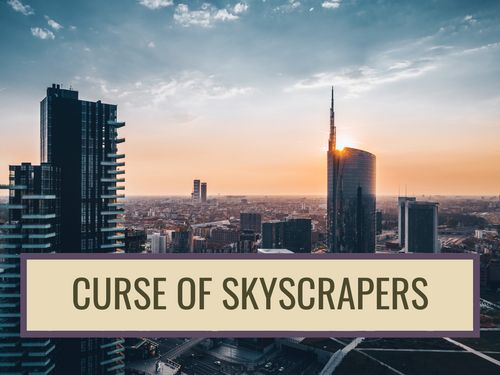How skyscrapers crash the economy
Sep 03, 2021 · 2 mins read
0
Share
Skyscrapers are glittering symbols of prosperity and economic growth. But the skyscraper curse, coined by Andrew Lawrence in 1999, says they're linked to economic crises. In this memo learn how "record-breaking skyscrapers" are omens of economic problems to come👇👇👇
Save
Share
Lawrence notes that over the last 100 years, every time a record-breaking skyscraper goes up, an economic crash isn't far behind. But the skyscrapers aren't causing the crash. Rather, they're both caused by the same factor: artificially low interest rates. That is, easy money.
Save
Share
Land value. With low interest rates, people borrow recklessly and bid up the land prices. Land becomes expensive, and builders are incentivized to build vertically and not horizontally. Therefore skyscrapers are built on top of distorted land prices.
Save
Share
Corporations. When borrowing money is cheap, companies take out loans to expand. This fuels a demand for more office space, further putting pressure on buildings to rise higher. Note, however, that the expanded operations are built on credit not revenue. And credit isn't forever.
Save
Share
New technology. Due to easy money, companies invest in R&D and this creates the tech to push buildings even higher. Even the first skyscrapers were built on a technological breakthrough: electric elevators. With new tech, buildings scale new heights.
Save
Share
Therefore, economic activity is built up - and buildings erected - on unsustainable credit. When the easy money dries up, the pile of cards comes tumbling down. The same force - artificially low interest rates - pushes up buildings and eventually brings down the economy.
Save
Share
The highest skyscraper in 80% of US states were finished during an economic downturn. The Woolworth Building of 1913, considered an exception to the skyscraper curse, actually did coincide with a recession but the downturn ended quickly due to World War 1.
Save
Share
The market knows. After a record-breaking skyscraper is built, "the stock market returns are substantially lower than they were in the years prior."
Save
Share
Jason Barr, an economist, argues the skyscraper curse doesn't exist. He compared the opening dates of skyscrapers with GDP growth and didn't find a link. But opening dates can be delayed due to a host of reasons, and this doesn't disprove the curse convincingly.
Save
Share
Bottom line. Skyscrapers are "canaries in the coal mine." Buildings going up at a frenetic rate, and up to frenzied heights, might be an early sign that easy money is fueling an unsustainable economic expansion that will one day collapse. Booms, after all, always precede busts..
Save
Share
0
